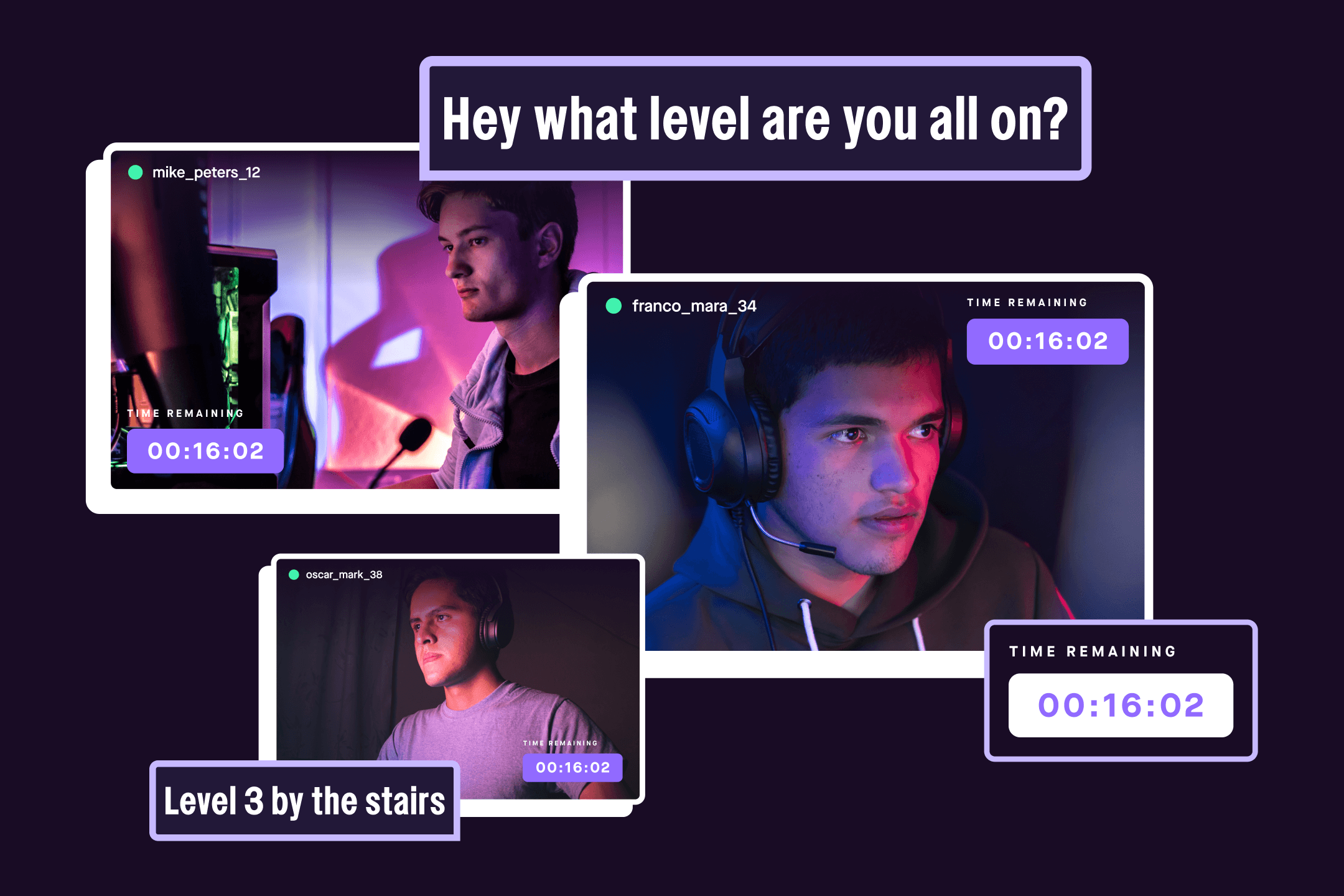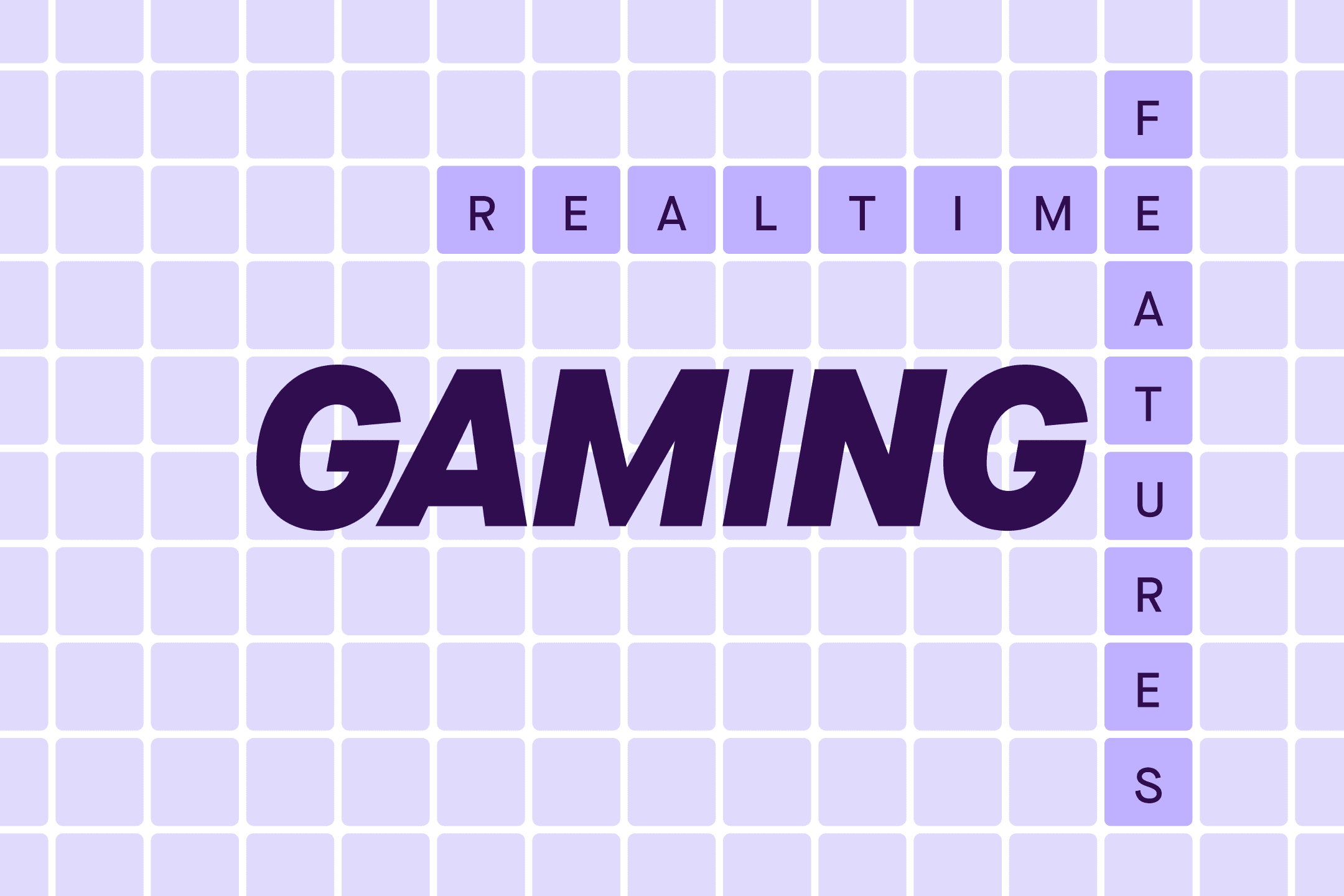WebSockets in realtime gaming: Achieving low latency gameplay

Learn about how choosing WebSockets can optimize system performance for low latency and enhanced player interactions in realtime gaming.
Introduction
In this blog post, we cover the benefits of choosing WebSockets for realtime gaming infrastructure. WebSocket-based infrastructure contributes to lowered latency and can help to eliminate the interruptions to gameplay, mitigating issues of uncoordinated player communication and frustrated users.
Why use WebSockets to power realtime multiplayer games?
WebSockets provide a bi-directional communication channel over a single, long-lived connection. This means data can flow in both directions (from client to server and vice versa) simultaneously. This isn’t natively possible with traditional HTTP.
Traditional HTTP needs to repeatedly establish and terminate connections, while WebSockets establish a connection once and keep it open. This approach is significantly more efficient. That single, persistent connection contributes to a critical reduction in overall latency, improving user experience.
Instantaneous player interactions and synchronized game state across clients are key components of satisfactory game play. This is exactly where WebSockets are at their best.
When developing realtime gaming apps, here's what WebSockets offer:
- Instant updates - As soon as one player makes a move, the game server can instantly broadcast that move to all other players via the WebSocket connection.
- Reduced latency - Since the connection is always open, there's no delay in establishing a connection, leading to faster data transmission.
- Persistent connection - Unlike traditional HTTP, where each request opens a new connection, WebSockets maintain an open connection, reducing the time taken to send and receive data.
- Two-way communication - WebSockets are bidirectional, meaning both the client and server can send information at any time. Players can send data (actions) to the server, and the server can instantly broadcast game updates to all players.
Efficient live play implementation significantly reduces drop out rates and increases playtime, as gamers experience responsive, realtime interactions free of noticeable delays.
Multiplayer realtime gaming with Pusher Channels
Pusher Channels provides a realtime communication layer based on the WebSocket protocol. It allows you to broadcast game state updates to all connected players using the pub/sub model.
Sending and receiving updates
When a player performs an action (like moving or jumping), this action is sent to the game server. The server processes this action, updates the game state, and then broadcasts this updated state to all players using Pusher Channels.
On the client side (player's device), the game listens for updates from Pusher Channels. When an update is received, the game renders the new state, ensuring the player sees the latest game environment.
WebSockets to reduce latency and ensure smooth gameplay
Latency refers to the delay between a player's action and the game's response. In multiplayer games, it's also the delay between one player's action and another player seeing that action. Low latency is crucial for a smooth gaming experience, especially in fast-paced games where split-second reactions matter.
Factors contributing to latency include physical distance (the further the data has to travel, the longer it takes, network congestion (data can get "stuck" if there's too much of it trying to pass through the same network path), and server processing time (time the game server takes to process an action and send a response).

How Pusher Channels helps with reduce latency and ensure smooth gameplay?
Low latency and consistent game state are high priority concerns for realtime multiplayer gaming. Channels offers a robust solution to achieve both. Here’s why.
- Easy integration. Setting up and managing your own WebSocket server can be complex. Pusher Channels provides easy-to-use SDKs for various platforms, allowing game developers to focus on game feature development rather than the intricacies of realtime communication.
- Global distribution. Pusher has clusters worldwide. Routing players through data centers most appropriate to your network, can lower ping rate and reduce latency due to the physical distance the data has to travel.
- Reliability and scalability. Pusher handles connection drops, retries, and can scale to handle many concurrent players. This means as your game grows in popularity, you won't have to worry about the underlying realtime infrastructure.
- Security. Pusher Channels comes with built-in authentication mechanisms. Taking advantage of private channels ensures that only authorized users can send and receive messages, adding a layer of security to your game.
- Fallback mechanisms. While WebSockets are widely supported and extremely efficient, it’s a good idea to have fallback mechanisms in place for rare scenarios where WebSockets might be blocked or not supported on the client end. Pusher Channels automatically falls back to other methods like long-polling when necessary.
- App usage metrics. Pusher provides analytics tools that allow you to monitor the number of messages, connected users, and other metrics. You can see these on the Pusher dashboard. By keeping an eye on these metrics, you can identify potential bottlenecks or issues that might be introducing latency.
There are a number of additional, strategical moves you can make to further reduce latency.
Implement client-side prediction. Even with minimal latency, there might be a tiny delay. To counteract this, games can predict a player's movement locally and display it before the server confirms the action. This makes the game feel more responsive.
Optimize data. Use compact data formats and only send essential data. For instance, if a player's position changes, send just the new coordinates instead of the entire player's data.
Think about rate limiting. For non-critical updates, consider sending them at a lower frequency. For example, a player's exact health might be updated in realtime, but their score or other secondary attributes might be updated every few seconds. This can help with latency and reducing the number of messages you are consuming.
Handling synchronization and game state updates with Pusher Channels
A significant challenge with developing multiplayer games is that multiple players interact in a shared environment and shared experience. You need to ensure all players see the same game state (e.g., player positions, scores, game environment changes) at the same time is tricky. Inconsistency can lead to a poor gaming experience.
Pusher Channels offers numerous built-in features, several of which can support harmonious game state sync.
- Realtime broadcasting. This ensures that all players receive updates almost simultaneously, maintaining a synchronized view of the game.
- Channels for different game rooms. Each game room or session can have its own channel. When a player makes a move in a game room, the update is broadcasted only to players in that room. Read more about how to use channels.
- Presence channels. Special channel types allow you to know who's online in a game room. This can be used to display player lists, or to ensure that only authorized players are in a game room. All players receive updates almost simultaneously, maintaining a synchronized view of the game. Read more about Presence channels.
- Reliable message ordering. Pusher Channels ensures that messages are delivered in the order they're sent to ensure the integrity of the game's timeline.
- Cache channels. Cache channels are a type of channel in Pusher that remembers the last triggered event and sends it as the first event to new subscribers. This essentially allows Pusher Channels to act as a realtime key-value store. Cache channels eliminate the need for the player to wait for the next game update or make a separate request to fetch the current game state.
- Serverless functions. Pusher Serverless Functions offer a way to respond to client events programmatically, allowing developers to modify, filter, change, and re-route realtime events without the need to manage their own infrastructure. Pusher functions can be used for things like game logic automation, chat features enhacement (e.g., profanity filtering and message translation), integration with external systems, and reducing latency (offloading certain tasks to serverless functions).
By focusing on low latency techniques, you can ensure a smooth and responsive gaming experience for your players. WebSockets are a pivotal tool in achieving that goal.
Get started with Pusher Channels
To see all the Pusher features in action, create a free Pusher account.
The Pusher sandbox plan is free and fully featured. It comes with 200,000 messages per day and 100 concurrent connections. This plan is more than sufficient for getting started and following all of our how-to tutorials.